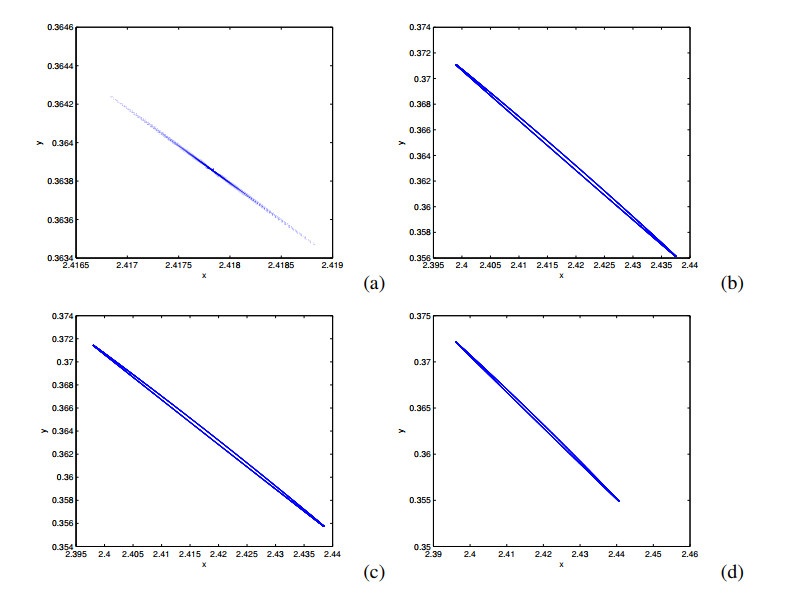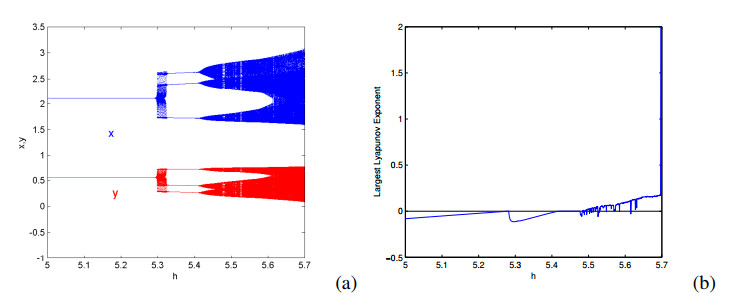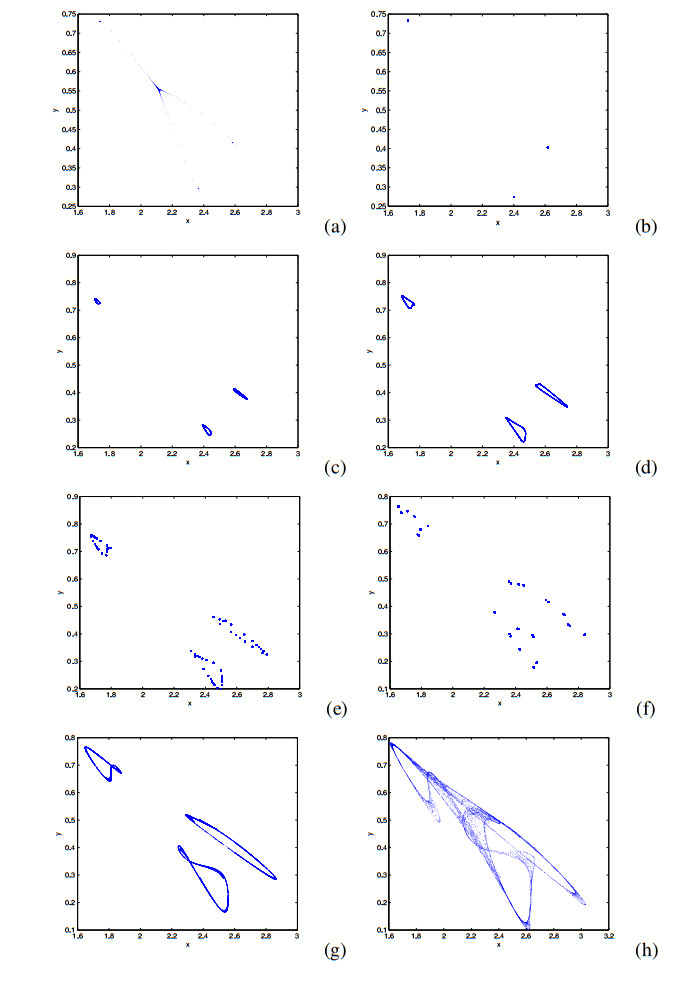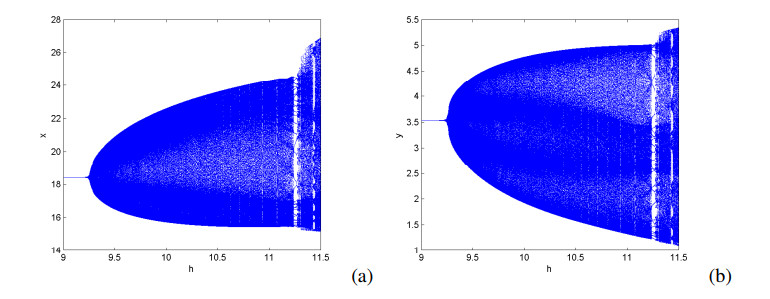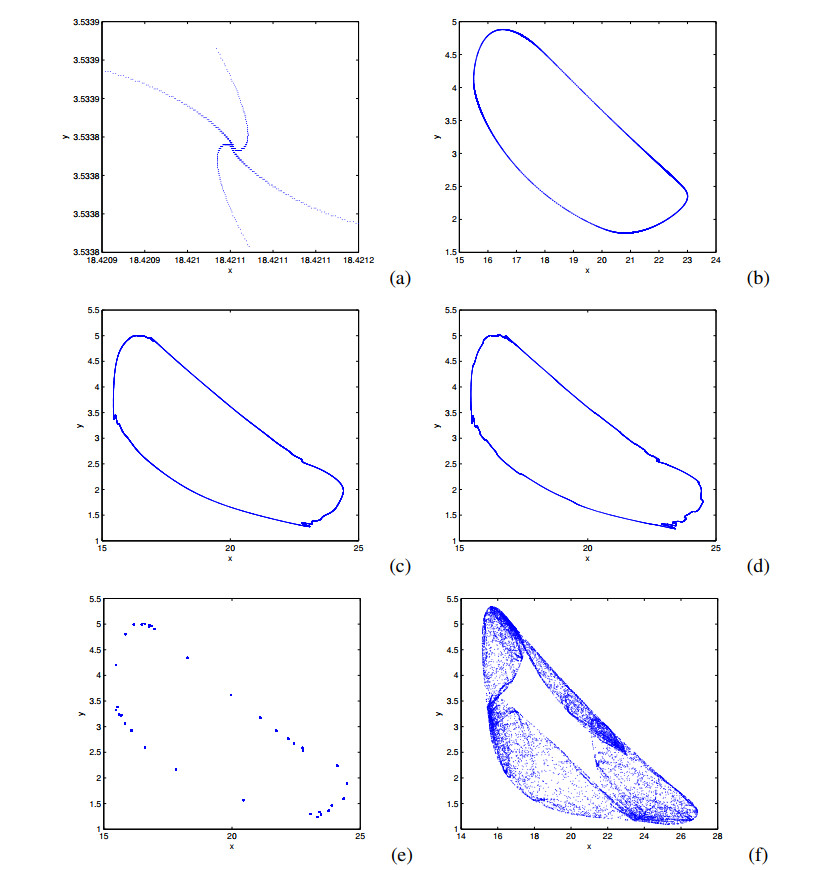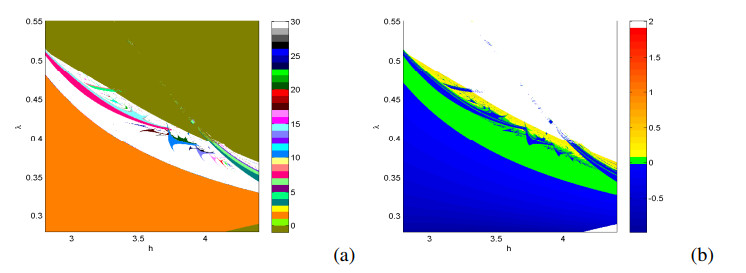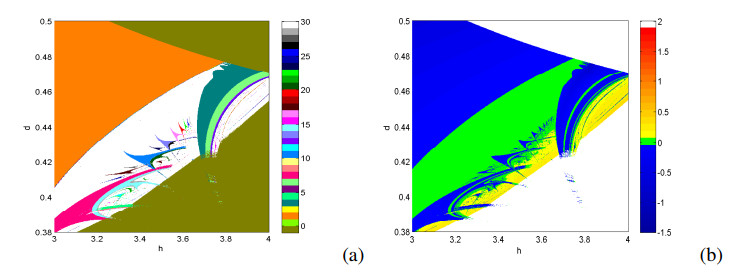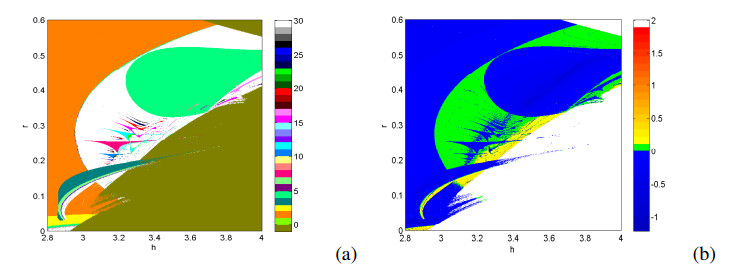1.
Introduction
Many real-world problems have a need to find a distance connecting two or more items that may not be easy to measure accurately. Consequently, to model distinct problems of practical nature, we require an appropriate metric. There exist several approaches to measure the distance more precisely which are being utilized to widen the extent of the investigation of fixed point theory. Non-unique and unique fixed point conclusions have been widely investigated with a different outlook via distinct metrics in the theory of fixed points (for instance, [1,2,7,8,9,10,24,36,42,43,44,45,46] and so on). Recently, the geometry of the collection of fixed points has been considered in various forms, such as the fixed circle problem, fixed disc problem, fixed ellipse problem, fixed elliptic disc problem and so on. The most general form of these problems is the "fixed figure problem."
In the current work, we introduce an M−class function to establish a unique fixed point and fixed circle via the S−metric introduced by Sedghi et al. [37]. Further, we investigate the notion of a fixed ellipse (elliptic disc) in an S−metric space to conclude that the set of fixed points incorporates an ellipse (elliptic disc) under appropriate conditions and verify this by illustrative examples. In the sequel, we explore some conditions which eliminate the possibility of the identity map in the existence of an ellipse (elliptic disc) in an S−metric space. Further, we give propositions for the existence of a self-map that fixes the given ellipse (elliptic disc) and demonstrate that an ellipse (elliptic disc) contains all the points of space except its foci. It is fascinating to mention that the uniqueness of a fixed ellipse, as well as the existence of the greatest fixed elliptic disc, may be established using celebrated contractive conditions like Banach contraction [4], Ćirić contraction [8], Quasi contraction [9], Rhoades contraction [35] and so on. These fixed ellipse (elliptic disc) conclusions encourage further investigations and implementations in S−metric spaces. It is significant to mention that the collection of fixed points carries out a significant role in the theory of fixed points and may form some geometrical shapes like circles, discs, ellipses or elliptic discs. In particular, the ellipse has numerous applications in Physics, Astronomy, Neural Networks, Biology, Artificial Intelligence, Economics and so on.
2.
Preliminaries
Definition 2.1. [37] An S−metric on a non-empty set U is a function S:U×U×U⟶R+ so that
(S1) S(ω,υ,u)≥0;
(S2) S(ω,υ,u)=0 iff ω=υ=u;
(S3) S(ω,υ,u)≤S(ω,ω,α)+S(υ,υ,α)+S(u,u,α),ω,υ,u,α∈U.
Geometrically, we connect three points ω,υ and u to get a triangle, and if α is a point mediating this triangle, then (S3) holds.
Remark 2.1. [37] In an S−metric space S(ω,ω,υ)=S(υ,υ,ω).
Definition 2.2. [37] Let {ωn} be a sequence in an S−metric space (U,S). Then,
(1) {ωn} is convergent to ω∈U if limn→∞S(ωn,ωn,ω)=0;
(2) {ωn} is a Cauchy sequence if limn,m→∞S(ωn,ωn,ωm)=0,n,m>N;
(3) (S,U) is complete if every Cauchy sequence in U converges to a point in U.
Definition 2.3. [26] Let (S,U) be an S−metric space, and C(ω0,r)={ω∈U:S(ω,ω,ω0)=r,r>0} is a circle centered on ω0 with a radius r. For a self-map A:U→U, if Aω=ω,ω∈C(ω0,r), then C(ω0,r) is called a fixed circle of A.
3.
Main results
First, we introduce an M−class function in an S−metric space which may be used as a tool to find a fixed point of contraction maps as well as explore its geometry. These functions also give the assurance of a fixed point, fixed circle (disc) and fixed ellipse (elliptic disc), and they unify, improve, extend and generalize numerous existing conclusions in the literature to S−metric spaces.
We denote a set of continuous functions f:[0,∞)5→[0,∞) by M, satisfying the following:
(f1) f(1,1,0,3,1)∈[0,1);
(f2) f is a linear homogeneous function, that is,
where ω=(ω1,ω2,ω3,ω4,ω5)∈[0,∞)5, λ≥0;
(f3) f is a non-decreasing function, that is,
where ω=(ω1,ω2,ω3,ω4,ω5) and υ=(υ1,υ2,υ3,υ4,υ5)∈[0,∞)5.
Then, function f is said to be an M-class function.
Example 3.1. Define f1:[0,∞)5→[0,∞) by f1(ω1,ω2,ω3,ω4,ω5)=αω1,α∈[0,1). Then, f1∈M.
Example 3.2. Define f2:[0,∞)5→[0,∞) by f2(ω1,ω2,ω3,ω4,ω5)=α(ω2+ω5),α∈[0,13). Then, f2∈M.
Example 3.3. Define f3:[0,∞)5→[0,∞) by f3(ω1,ω2,ω3,ω4,ω5)=αmax{ω2,ω5},α∈[0,13). Then, f3∈M.
Example 3.4. Define f4:[0,∞)5→[0,∞) by f4(ω1,ω2,ω3,ω4,ω5)=αω1+βω2+γω5,α+β+γ∈[0,1). Then, f4∈M.
Example 3.5. Define f5:[0,∞)5→[0,∞) by f4(ω1,ω2,ω3,ω4,ω5)=max{ω1,ω2,ω5}. Then, f5∈M.
Example 3.6. Define f6:[0,∞)5→[0,∞) by f4(ω1,ω2,ω3,ω4,ω5)=α(ω3+ω4),α∈[0,13). Then, f6∈M.
Example 3.7. Define f7:[0,∞)5→[0,∞) by f7(ω1,ω2,ω3,ω4,ω5)=αmax{ω3,ω4},α∈[0,13). Then, f7∈M.
Example 3.8. Define f8:[0,∞)5→[0,∞) by
Then, f8∈M.
Example 3.9. Define f9:[0,∞)5→[0,∞) by
Then, f9∈M.
Lemma 3.10. If f∈M and ω,υ∈[0,∞) are such that
then ω≤ηυ, where η=f(1,1,0,3,1)∈[0,1).
Proof. We may presume without loss of generality that ω≤f(υ,ω,0,υ+2ω,ω). If υ<ω,
a contradiction. Thus, ω≤υ. Also,
Theorem 3.11. Let (U,S) be a complete S−metric space. For all ω≠υ∈U, f∈M and A:U→U, if S(Aω,Aω,Aυ)>0 implies
then A has a unique fixed point.
Proof. For arbitrary ω0∈U, let ω1=Aω0. If ω1=Aω1, ω1 is a fixed point of A, and the proof is concluded. So, consider ω1≠Aω1 and ω2=Aω1. Consequently, S(Aω0,Aω0,Aω1)>0, and then, using inequality (3.2) for ω=ω0, υ=ω1 and properties of M−class function,
Now, using Lemma 3.10, we have
Repeatedly, we get S(ω2,ω2,ω3)≤ηS(ω1,ω1,ω2)≤η2S(ω0,ω0,ω1).
Continuing like this,
Now, define a Picard sequence ωn+1=Aωn,n∈N∪{0}, with initial point ωo∈U. If for some n∈N, ωn=ωn+1=Aωn, then ωn is a fixed point of A, and the proof is complete. So, presume that ωn≠ωn+1, for all n∈N∪{0}. By using (S3),
and hence {ωn} is a Cauchy sequence. Since (S,U) is complete, {ωn} converges to ω∈U, that is, limn→∞S(ωn,ωn,ω)=0. We assert that ω is a fixed point of A. If not, ω≠Aω, that is, S(ω,ω,Aω)>0. Now,
Since f is continuous, as n→∞, using Lemma 3.10, we obtain
Consequently, S(ω,ω,Aω)=0, that is, Aω=ω.
Now, suppose ω∗ is another fixed point of A, that is, S(Aω,Aω,Aω∗)>0, and
Again by Lemma 3.10, S(ω,ω,ω∗)=0, that is, ω=ω∗. Hence, A has a unique fixed point in U.
Example 3.12. Let U=[0,1] and an S metric S:U×U×U→R+ be
Then, (S,U) is a complete S−metric space. Define maps f:[0,∞)5→[0,∞) and A:U→U as
and Aω=ω4ω+1, respectively. Then, f∈M. Since
that is, A satisfies contraction condition (3.2), and 0 is a unique fixed point of A.
Corollary 3.13. Theorem 3.11 also continues to be true if (3.2) is replaced by
Proof. Define f:[0,∞)5→[0,∞) by f(ω1,ω2,ω3,ω4,ω5)=αω1,α∈[0,1). Then, f∈M and the proof complies with Theorem 3.11.
Remark 3.1. Corollary 3.13 is an enhancement of the Banach contraction theorem [4] in S−metric space, which is the result of Sedghi et al. [37].
Corollary 3.14. Theorem 3.11 also continues to be true if (3.2) is replaced by
Proof. Define f:[0,∞)5→[0,∞) by f(ω1,ω2,ω3,ω4,ω5)=α(ω2+ω5),α∈[0,13). Then, f∈M, and the proof complies with Theorem 3.11.
Remark 3.2. Corollary 3.14 is an enhancement of the Kannan contraction theorem [20] in S−metric space, which is the result of Phaneendra [33].
Corollary 3.15. Theorem 3.11 also continues to be true if (3.2) is replaced by
Proof. Define f:[0,∞)5→[0,∞) by f(ω1,ω2,ω3,ω4,ω5)=α(ω3+ω4),α∈[0,13). Then, f∈M, and the proof complies with Theorem 3.11.
Remark 3.3. Corollary 3.15 is an enhancement of the Chatterjee contraction theorem [7] in S−metric space, which is the result of Phaneendra and Swamy [31].
Corollary 3.16. Theorem 3.11 also continues to be true if (3.2) is replaced by
Proof. Define f:[0,∞)5→[0,∞) by f(ω1,ω2,ω3,ω4,ω5)=α{ω1,ω2,ω3,ω4,ω5}α∈[0,13). Then, f∈M, and the proof complies with Theorem 3.11.
Remark 3.4. Corollary 3.16 is an enhancement of the Ćirić type contraction theorem [9] in S−metric space, which is the result of Phaneendra and Swamy [31].
Corollary 3.17. Theorem 3.11 also continues to be true if (3.2) is replaced by
where α+β+3γ+δ∈[0,1).
Proof. Define f:[0,∞)5→[0,∞) by
Then, f∈M, and the proof complies with Theorem 3.11.
Remark 3.5. Corollary 3.17 is an enhancement of the Hardy-Roger type contraction theorem [11] in S−metric space.
Corollary 3.18. Theorem 3.11 also continues to be true if (3.2) is replaced by
Proof. Define f:[0,∞)5→[0,∞) by f(ω1,ω2,ω3,ω4,ω5)=αω1+βω2+δω5,α+β+δ∈[0,1). Then, f∈M, and the proof complies with Theorem 3.11.
Remark 3.6. Corollary 3.18 is an enhancement of the Reich-type contraction theorem [34] in S−metric space.
On suitably varying the elements of an M−class function, distinct existing well-known conclusions in the literature may be deduced. In all the above results, we have generalized, extended, unified and improved some well-known results wherein the fixed point is always unique. However, there may arise some situations where the fixed point is not unique, and the collection of fixed points may include some geometrical shape. So, now we review the geometry of the collection of fixed points in S−metric space via an M−class function. It is significant to notice that the S−metric is not in general created by any metric.
Now, define a set
(f4) M∗={f∈M:f(0,1,1,1,1)∈[0,1)}.
Clearly, M∗⊆M.
Theorem 3.19. Let (S,U) be an S−metric space, f∈M∗. For self-map A:U→U, if S(Aω,Aω,ω)>0 implies
then, C(ω0,r) is a fixed circle of A centered on ω0 with radius r=inf{S(Aω,Aω,ω):Aω≠ω,ω∈U}.
Proof. Let C(ω0,r) be any circle centered on ω0 with radius r and Aω0≠ω0, that is, S(Aω0,Aω0,ω0)>0. So, by using inequality (3.4), (f2) and (f4), we have
a contradiction, which implies Aω0=ω0.
Now, consider ω∈C(ω0,r) and Aω≠ω, that is, S(Aω,Aω,ω)>0. Also, by definition of r, S(Aω,Aω,ω)≥r.
Now, by using inequality (3.4), properties of the M−class function and Lemma 3.10,
a contradiction. Thus, S(Aω,Aω,Aω)=0, that is, Aω=ω. Hence, C(ω0,r) is a fixed circle of A.
Example 3.20. Let an S−metric S:U×U×U⟶R+ be
where ω=(w1,w2,w3),υ=(v1,v2,v3),u=(u1,u2,u3)∈U=R3. Then,
where ω0=(1,2,3)∈U and r=8, that is, a circle centered at (1,2,3) with radius 8 is given by
Define A:U⟶U as A(a,b,c)={(a,b,c),(a,b,c)∈C(ω0,8)(1,0,2),otherwise.
Then, map A validates all the hypotheses of Theorem 3.19 and fixes the unique circle C(ω0,8), that is, the set of fixed points of a self-map A contains a unique circle C(ω0,8) (see Figure 1).
Following Joshi et al. [16,17], now, we define an ellipse (elliptic disc) in an S−metric space and discuss their shapes in different S−metric spaces for different lengths of semi-major axes and different foci. Next, we describe a fixed ellipse (elliptic disc) in an S−metric space and exploit an S−metric variant of a celebrated Caristi type map [6] to conclude that the collection of fixed points incorporates an ellipse (elliptic disc). It is well known that an ellipse is the locus of a point for which the sum of the Euclidean distances from the two foci is uniform, and the circle is the ellipse of diminishing eccentricity wherein both the focal points are identical. In fact, ellipses emerge naturally in numerous areas, such as planetary orbits.
Definition 3.1. We define an ellipse having foci at c1 and c2 in an S−metric space (U,S) as
If S(c1,c1,ω)+S(c2,c2,ω)≤2a, then the above definition reduces to the definition of an elliptic disc, and we denote it by ED(c1,c2,a). For the formation of ellipse, S(c1,c1,c2)<2a.
The distance 2f=S(c1,c1,c2) is the linear eccentricity. It is well known that eccentricity is the degree of the deflection of the curve from the roundness of a specific shape. The midpoint of line c1c2 is said to be a center of an ellipse (elliptic disc). The portion of length 2a passing through the foci c1 and c2 is the major axis, and the line through the center, perpendicular to the major axis, is the minor axis.
Example 3.21. Let an S−metric S:U×U×U⟶R+ be
that is, S(−5,−5,5)=20. Then,
and
that is, an ellipse and elliptic disc centered at the origin having foci at −5 and 5 are {−5.5,5.5} and [−5.5,5.5], respectively.
Example 3.22. Let an S−metric S1:U×U×U⟶R+ be S1(ω,υ,u)=Σ2i=1(|ωi−ui|+|ωi+ui−2νi|), where ω=(w1,w2),υ=(v1,v2),u=(u1,u2)∈U=R2, and S1(c1,c1,c2)=8, where c1=(2,0) and c2=(0,2). Then,
that is, an ellipse centered at (1,1) with foci (2,0) and (0,2) is shown as the blue line in Figure 2.
If an S−metric S2:U×U×U⟶R+ is
and S2(c1,c1,c2)=4, then an ellipse having the same center and the same foci as above is √2(2−ω1)2+2ω22+√2ω21+2(2−ω2)2=6 and is shown as the blue line in Figure 3.
Let S3:U×U×U⟶R+ be S3(ω,υ,u)=max{|ω1−υ1|,|ω2−υ2|,|υ1−u1|,|υ2−u2|,|u1−ω1|,|u2−ω2|}, ω=(ω1,ω2),υ=(υ1,υ2), u=(u1,u2)∈U=R2, and S3(c1,c1,c2)=2. Then, again, an ellipse with the same center and the same foci is max{|2−w1|,|w2|}+max{|w1|,|2−w2|}=2 and is shown as the blue line in Figure 4.
The shapes of ellipses corresponding to an S1 metric, as used in Figure 2, corresponding to different foci and different values of semi major axes are shown in Figure 5.
Example 3.23. Let an S−metric S1:U×U×U⟶R+ be S1(ω,υ,u)=Σ3i=1(|ωi−υi|+|ωi−ui|), where ω=(ω1,ω2,ω3),υ=(υ1,υ2,υ3),u=(u1,u2,u3)∈U=R3. Then,
where c1=(0,0,0) and c2=(1,1,1), that is, an ellipse centered at (0.5,0.5,0.5) with foci (0,0,0) and (1,1,1) is shown in Figure 6.
If an S−metric S2:U×U×U⟶R+ is
then an ellipse having the same center and the same foci as above is
and is shown in Figure 7.
If S3:U×U×U⟶R+ is
then again an ellipse with the same center and the same foci is
and is shown in Figure 8.
It is fascinating to see that the shapes of some ellipses may change by changing the length of the semi-major axis (see Figures 1–3) or foci (see Figure 4), or involved metric (see Figures 2–4 and 6–8).
Remark 3.7. The interior of Figures 2–8 is the corresponding elliptic disc with the same center, foci and length of the semi-major axis as those of the ellipse.
Following Caristi [6], we introduce the Caristi map in an S−metric space.
Definition 3.2. A self-map A of an S−metric space (U,S) is a Caristi map on U if ς:U⟶[0,∞) is a lower semi-continuous function for (U,S) and
Following Joshi et al. [16], we introduce fixed ellipse and elliptic disc in S−metric space to explore the geometry of the collection of non-unique fixed points.
Definition 3.3. Let A:U⟶U be a self-map of an S−metric space (U,S). If Aω=ω,ω∈E(c1,c2,a),c1,c2∈U,a∈[0,∞), then E(c1,c2,a) is said to be the fixed ellipse of A.
Definition 3.4. Let A:U⟶U be a self-map of an S−metric space (U,S). If Aω=ω,ω∈ED(c1,c2,a),c1,c2∈U,a∈[0,∞), then ED(c1,c2,a) is said to be the fixed elliptic disc of A.
Theorem 3.24. Let E(c1,c2,a) be an ellipse in an S−metric space (U,S). Define ς:U⟶[0,∞) as
If self-map A:U⟶U satisfies the hypotheses
(E1) S(ω,ω,Aω)≤ς(ω)−ς(Aω),
(E2) S(c1,c1,Aω)+S(c2,c2,Aω)≥2a,
(E3) if S(Aω,Aω,Aυ)≤σS(ω,ω,υ),ω∈E(c1,c2,a),υ∈U∖E(c1,c2,a),σ∈[0,1),
then E(c1,c2,a) is a unique fixed ellipse of A.
Proof. Let ω∈E(c1,c2,a) be an arbitrary point. Utilizing (E1) and Eq (3.8),
that is,
that is, ω is a fixed point of A,∀ω∈E(c1,c2,a).
So, a self-map A fixes an ellipse E(c1,c2,a), that is, the set of fixed points of a self-map A contains an ellipse.
Let E(c1,c2,a) and E(c′1,c′2,a′) be two fixed ellipses of A, that is, A satisfies both conditions (E1) and (E2) for each of the ellipses E(c1,c2,a) and E(c′1,c′2,a′). Let ω∈E(c1,c2,a) and υ∈E(c′1,c′2,a′). Using (E3), S(ω,ω,υ)=S(Aω,Aω,Aυ)≤σS(ω,ω,υ), a contradiction. Hence, E(c1,c2,a) is a unique fixed ellipse of A.
The subsequent explanatory example with pictographic validation substantiates Theorem 3.24.
Example 3.25. Let an S−metric S:U×U×U⟶R+ be
where ω=(w1,w2),υ=(v1,v2),u=(u1,u2)∈U=R2. Then,
where c1=(4,5) and c2=(−2,−3)∈U, that is, the equation of an ellipse centered at (1,1) with foci at (4,5) and (−2,−3) is
Define A:U⟶U as A(a,b)={(a,b),(a,b)∈E(c1,c2,7.5)(2.47,0),otherwise.
Then, map A validates all the hypotheses of Theorem 3.24 and fixes the unique ellipse E(c1,c2,5), that is, the set of fixed points of a self-map A contains a unique ellipse E(c1,c2,5) (see Figure 9).
Geometrically, condition (E1) states that Aω is in the exterior of an ellipse, and condition (E2) states that Aω is in the interior of an ellipse.
The following examples depict the importance of hypotheses (E1)–(E3) in the existence of a fixed ellipse or a unique fixed ellipse in Theorem 3.24.
Example 3.26. Let an S−metric S:U×U×U⟶R+ be
The ellipse
Define A:U⟶U as Aω={ω,ω=0orωisanoddnumber6,otherwise.
Then, a self-map A validates all the hypotheses of Theorem 3.24 except (E3). Hence, a self-map A fixes the ellipse E(2,4,6). However, it is not unique, and there may exist infinitely many ellipses which are fixed by a self-map A.
Example 3.27. Let an S−metric S:U×U×U⟶R+ be
where ω=(w1,w2),υ=(v1,v2),u=(u1,u2)∈U=R2. Then,
where c1=(2,0) and c2=(0,2)∈U, that is, the equation of an ellipse centered at (1,1) with foci at (2,0) and (0,2) is
that is,
that is,
Define A:U⟶U as A(ω,υ)={(ω,υ),ω∈{−1,0,1,2,3}(3,0),otherwise.
Then, a self-map A validates hypothesis (E2) and does not validate hypotheses (E1) and (E3) of Theorem 3.24. Hence, A does not fix the ellipse E(c1,c2,6) but fixes the points (0,−1),(0,3),(2,−1),(2,3),(−1,y) and (3,y)∈U,0≤y≤2 of an ellipse (3.11).
Theorem 3.28. The conclusion of Theorem 3.24 continues to be true even if we replace (E1) and (E2) by
(E′1) S(ω,ω,Aω)≤ς(ω)+ς(Aω)−4a,
(E′2) S(c1,c1,Aω)+S(c2,c2,Aω)≤2a.
Proof. Let ω∈E(c1,c2,a) be any arbitrary point. Using (E′1) and Equation (3.8),
a contradiction, that is, S(ω,ω,Aω)=0⟹Aω=ω,ω∈E(c1,c2,a).
The uniqueness of a fixed ellipse may be established as in Theorem 3.24.
It is clear that geometrically the condition (E′1) states that Aω is in the exterior of an ellipse, and the condition (E′2) states that Aω is in the interior of an ellipse.
The relationships among the "if"s and "then"s in this theorem are unclear. Currently, it appears that the first "if" ("If self-map …") does not have a conclusion, that is, a corresponding "then" clause. Meanwhile, hypothesis (E2D) appears to lack an expected "if" preceding its "then". Lastly, (E3D) appears to be its own complete conditional.
Theorem 3.29. Let ED(c1,c2,a) be an elliptic disc in an S−metric space (U,S). Define ς:U⟶[0,∞) as in (3.8). If self-map A:U⟶U satisfies the hypotheses
(E1D) S(ω,ω,Aω)≤ς(ω)+ς(Aω)−4a,
(E2D) S(c1,c1,Aω)+S(c2,c2,Aω)≤2a,ω∈ED(c1,c2,a).
Then, ED(c1,c2,a) is a fixed elliptic disc of A.
(E3D) In addition to the above hypotheses, if S(Aω,Aω,Aυ)≤σS(ω,ω,υ),ω∈ED(c1,c2,a), υ∈U∖ED(c1,c2,a),σ∈[0,1), then ED(c1,c2,a) is a fixed elliptic disc of maximum semi-major axis a, that is, there is no fixed elliptic disc ED(c1,c2,a) of A having a semi-major axis greater than a.
Proof. The existence of a fixed elliptic disc may be shown as in Theorem 3.28.
Let there exist two fixed elliptic discs ED(c1,c2,a) and ED(c′1,c′2,a′) of A,a<a′, that is, A satisfies both the conditions (E1D) and (E2D) for each of the elliptic discs E(c1,c2,a) and E(c′1,c′2,a′). Let ω∈ED(c1,c2,a) and υ∈ED(c′1,c′2,a′). Using (E3D), S(ω,ω,υ)=S(Aω,Aω,Aυ)≤σS(ω,ω,υ), a contradiction. Hence, ED(c1,c2,a) is a fixed elliptic disc of maximum semi-major axis a.
The subsequent explanatory example with pictographic validation substantiates Theorems 3.28 and 3.29.
Example 3.30. Let an S−metric S:U×U×U⟶R+ be
Then,
where c1=(0,0) and c2=(ln2,0), that is, the equation of an ellipse centered at (0.35,0) with foci at (0,0) and (ln2,0) is
that is,
that is,
is an ellipse, and
is an elliptic disc.
Define A:U⟶U as A(a,b)={(a,b),(a,b)∈ED(c1,c2,ln2)(a−ln15,b−ln15),otherwise.
Then, map A validates all the postulates of Theorem 3.28 except (E3) and all postulates of Theorem 3.29. Consequently, a self-map A fixes the ellipse E(c1,c2,2) and elliptic disc ED(c1,c2,2) of maximum semi-major axis 2, that is, the set of fixed points of A contains an ellipse E(c1,c2,2) as well as an elliptic disc ED(c1,c2,2) of maximum semi-major axis 2 (see Figure 10). Nevertheless, a fixed ellipse is not unique, as there exist many fixed ellipses. For example, the ellipses having foci at (0,0) and (ln2,0) with a semi-major axis of less than 2 units are the fixed ellipses of A.
Using Eq (3.8), we give one more result for the existence of a unique fixed ellipse on an S−metric space.
Theorem 3.31. Theorem 3.24 continues to be true even if we replace (E2) by
(E″2) ηS(ω,ω,Aω)+S(c1,c1,Aω)+S(c2,c2,Aω)≥2a.
Proof. Let ω∈E(c1,c2,a) be any arbitrary point. Using (E1) and Eq (3.8),
a contradiction, that is, S(ω,ω,Aω)=0⟹Aω=ω,ω∈E(c1,c2,a).
Following the pattern of Theorem 3.24, we may establish that E(c1,c2,a) is a unique fixed ellipse of A.
Theorem 3.32. The conclusion of Theorem 3.29 continues to be true even if we replace (E1D) and (E2D) by
(E′1D) S(ω,ω,Aω)≤ς(ω)−ς(Aω);
(E′2D) ηS(ω,ω,Aω)+S(c1,c1,Aω)+S(c2,c2,Aω)≥2a.
Proof. Let ω∈ED(c1,c2,a) be any arbitrary point. Using (E′1D) and Eq (3.8),
a contradiction, that is,
Following Theorem 3.29, we may establish that ED(c1,c2,a) is a fixed elliptic disc of maximum semi-major axis a.
Example 3.33. Let an S−metric S:U×U×U⟶R+ be
Then
where c1=(0,3) and c2=(0,−3), that is, the equation of an ellipse centered at (0,0) with foci at (0,3) and (0,−3) is
that is,
is an ellipse, and
is an elliptic disc.
Define A:U⟶U as A(a,b)={(a,b),(a,b)∈ED(c1,c2,2)19(tana,tanb),otherwise.
Then, map A validates all the hypotheses of Theorem 3.31 except (E3) and all hypotheses of Theorem 3.32. Consequently, a self-map A fixes the ellipse E(c1,c2,2) and elliptic disc ED(c1,c2,2) of maximum semi-major axis 2, that is, the set of fixed points of A contains an ellipse E(c1,c2,2) as well as an elliptic disc ED(c1,c2,2) of maximum semi-major axis 2 (see Figure 11). However, a fixed ellipse is not unique, as there exist many fixed ellipses. For example, the ellipse having foci at (0,3) and (0,−3) with a semi-major axis less than 2 is also the fixed ellipse of A.
Example 3.34. Let an S−metric S:U×U×U⟶R+ be
The ellipse and elliptic disc centered at 3 with foci at 2 and 4 are
and
Define A:U⟶U as Aω={−32,ω∈(−∞,0]152,ω∈(0,∞).
Then, map A validates all the hypotheses of Theorem 3.31 and fixes the ellipse E(2,4,9), that is, the set of fixed points of a self-map A contains unique ellipse E(2,4,9). The next result is proved by taking a function ζa to be discontinuous.
Theorem 3.35. Let E(c1,c2,a) be an ellipse in an S−metric space (U,S). Define ζa:[0,∞)⟶[0,∞) as
If there exists A:M⟶M satisfying
(E‴1) S(ω,ω,Aω)≤S(c1,c1,Aω)+S(c2,c2,Aω)−ζa(S(ω,ω,Aω)),
(E‴2) S(c1,c1Aω)+S(c2,c2,Aω)≤2a,
(E‴3) S(Aω,Aω,Aυ)≤σS(ω,ω,υ),ω,υ∈E(c1,c2,a),υ∈U∖E(c1,c2,a),σ∈[0,1), then E(c1,c2,a) is a unique fixed ellipse of A.
Proof. Let ω∈E(c1,c2,a) such that Aω≠ω,ω∈E(c1,c2,a). Using (E‴1) and Eq (3.16),
⟹2S(ω,ω,Aω)≤0, a contradiction, that is, Aω=ω,ω∈E(c1,c2,a).
Following Theorem 3.24, we may establish that E(c1,c2,a) is a unique fixed ellipse of A.
The subsequent example depicts the significance of condition (E‴3) in the existence of a unique fixed ellipse in Theorem 3.35.
Example 3.36. Let an S−metric S:U×U×U⟶R+ be
The ellipse
Define A:U⟶U as Aω={2ω+1ω+3,ω∈(−∞,2)15ω−3ω+1,ω∈[2,∞).
Then, a self-map A validates the hypotheses (E‴1) and (E‴2) of Theorem 3.35 but does not validate the hypothesis (E‴3). Noticeably, A fixes the two ellipses E(2,4,4) and E(2,5,11). It is clear that geometrically the condition (E‴1) states that Aω is in the exterior of an ellipse, and the condition (E‴2) states that Aω is in the interior of an ellipse.
The relationships among the "if"s and "then"s in this theorem are unclear, as in Theorem 3.29.
Theorem 3.37. Let ED(c1,c2,a) be an elliptic disc in an S−metric space (U,S). Define ζa:U⟶[0,∞) as in Eq (3.16). If self-map A:U⟶U satisfies the hypotheses
(E″1D) S(ω,ω,Aω)≤S(c1,c1,Aω)+S(c2,c2Aω)−ζa(S(ω,ω,Aω)),
(E2D) S(c1,c1,Aω)+S(c2,c2,Aω)≤2a,ω∈ED(c1,c2,a).
Then, ED(c1,c2,a) is a fixed elliptic disc of A.
(E3D) In addition to the above hypotheses, if S(Aω,Aω,Aυ)≤σS(ω,ω,υ),ω∈ED(c1,c2,a), υ∈U∖ED(c1,c2,a),σ∈[0,1), then ED(c1,c2,a) is a fixed elliptic disc of maximum semi-major axis a, that is, there is no fixed elliptic disc ED(c1,c2,a) of A having a semi-major axis greater than a.
Proof. The proof is simple and follows Theorem 3.35.
Remark 3.8 (Joshi et al. [14,16] and Joshi and Tomar [17]). (1) Examples 3.21–3.23, 3.26–3.36 (Examples 3.21, 3.22, 3.30–3.33) demonstrate that an ellipse (elliptic disc) in an S−metric space may not be similar to an ellipse (elliptic disc) in a Euclidean space. Further, Examples 3.22, 3.23, 3.30 and 3.33 demonstrate the significant fact that the shape of the ellipse (elliptic disc) may alter by altering the center, the semi-major axis, the foci or the S−metric under consideration. Also, the semi-major axis a of the fixed ellipse (elliptic disc) is not dependent on a center and may not be maximal.
(2) The fixed ellipse and fixed elliptic disc conclusions are comparable to fixed-circle and fixed disc conclusions if both the focuses coincide. Clearly, if c1=c2=u0 (say), E(c1,c2,a)=C(u0,a2) and ED(c1,c2,a)=D(u0,a2), with center u0 and radius a2. Also, AE(c1,c2,a)=E(c1,c2,a) does not imply that E(c1,c2,a) is a fixed ellipse of A, and AED(c1,c2,a)=ED(c1,c2,a) does not imply that ED(c1,c2,a) is a fixed elliptic disc of A.
(3) It is clear from Examples 3.30 and 3.33 that if a self-map fixes an elliptic disc, then it also fixes an ellipse. However, the reverse may not hold (see Examples 3.25–3.27, 3.34, 3.36). The fixed elliptic disc is not unique, that is, all the elliptic discs inside a fixed elliptic disc of a self map in an S−metric space are also fixed elliptic discs (see Examples 3.30 and 3.33). An elliptic disc having a maximum semi-major axis is called the greatest elliptic disc. For details on the collection of non-unique fixed points containing some geometric figures, one may refer to Aydi et al. [3], Beloul et al. [5], Joshi et al. [13,14,15,16,17,18], Joshi and Tomar [17], Mlaiki et al. [22,23], Özgür et al. [27], Özgür and Taş [27,28,29,30], Petwal et al. [32], Taş et al. [38], Tomar and Joshi [39], Tomar et al. [40] and references therein.
Let I:U⟶U be the identity map, that is, Iω=ω∈U. Clearly, I satisfies the first two hypotheses of each of the Theorems 3.24, 3.28, 3.31 and 3.35 for an ellipse. Now, we devise conditions that preclude the possibility of the identity map I from Theorems 3.24, 3.28, 3.31 and 3.35.
Theorem 3.38. Let a self-map A:U⟶U have a fixed ellipse E(c1,c2,a),c1,c2∈U,a∈[0,∞) in an S−metric space (U,S). Let map ς be defined as in Theorems 3.24, 3.28, 3.31 and 3.35, and map A satisfies
(Ⅰ) λS(ω,ω,Aω)≤ς(ω)−2ς(Aω), ω∈U,andλ>2⟺A=I.
Proof. Let ω∈U and Aω≠ω. Then,
(λ−2)S(ω,ω,Aω)≤0, a contradiction, since λ>2. Hence, S(ω,ω,Aω)=0, that is, Aω=ω=Iω,ω∈U.
Conversely, it is straightforward to validate that I satisfies inequality (Ⅰ).
Theorem 3.39. The conclusion of Theorem 3.38 continues to be true if (Ⅰ) is replaced by
(Ⅰ′) S(ω,ω,Aω)≤λ1(ς(ω)−2ς(Aω)), ω∈U,andλ1<12⟺A=I.
Proof. Let ω∈U and Aω≠ω. Then,
that is, (1−2λ1)S(ω,ω,Aω)≤0, a contradiction, since λ1<12. Hence, S(ω,ω,Aω)=0, that is, Aω=ω=Iω,ω∈U.
Conversely, it is straightforward to validate that I satisfies inequality (Ⅰ′).
Theorem 3.40. The conclusion of Theorem 3.38 continues to be true if (Ⅰ) is replaced by
(Ⅰ″) S(ω,ω,Aω)≤ζa(S(ω,ω,Aω))+2a.
Proof. Let ω∈U and Aω≠ω, and then S(ω,ω,Aω)≤S(ω,ω,Aω)−2a+2a=S(ω,ω,Aω), a contradiction. Hence, Aω=ω=Iω,ω∈U.
Conversely, it is straightforward to validate that I satisfies inequality (Ⅰ)″.
Remark 3.9. Conclusions of Theorems 3.38–3.40 are also true for fixed elliptic disc ED(c1,c2,a).
It is interesting to see that the fixed ellipse E(c1,c2,a) may not be unique (see Examples 3.26, 3.30 and 3.36) except if a supplementary contraction condition is presumed. In Theorems 3.24, 3.28, 3.31, and 3.35, we have utilized the Banach contraction [4] to prove the uniqueness of a fixed ellipse. In the subsequent result, we determine the uniqueness utilizing quasi-contractive condition [9]. In the same way, we may utilize other classical contractions present in the literature to demonstrate the uniqueness of the fixed ellipse.
Theorem 3.41. Let E(c1,c2,a) be a fixed ellipse of a self-map A:U→U of an S−metric space (U,S). If A satisfies the first two conditions of Theorems 3.24, 3.28, 3.31 and 3.35, along with the contraction condition
ω∈E(c1,c2,a),υ∈U∖E(c1,c2,a), where η∈[0,1), then E(c1,c2,a) is a unique fixed ellipse of A.
Proof. Let E(c1,c2,a) and E(c′1,c′2,a′) be two fixed ellipses of A, that is, A satisfies the first two postulates of Theorems 3.24, 3.28, 3.31 and 3.35 for both the ellipses E(c1,c2,a) and E(c′1,c′2,a′). Let ω∈E(c1,c2,a) and υ∈E(c′1,c′2,a′). Using inequality (3.17),
a contradiction. Hence, E(c1,c2,a) is a unique fixed ellipse of A.
Remark 3.10. A conclusion almost identical to Theorem 3.41 may also be established for the existence of the greatest fixed elliptic disc using a quasi-contractive condition [9].
Next, we give propositions for the existence of a self-map that fixes the given ellipses.
Proposition 3.1 Let E(c1,c2,a) and E(c′1,c′2,a′) be any two ellipses in an S−metric space (U,S). Then, we have more than one self-map A on U such that a self-map A fixes the ellipses E(c1,c2,a) and E(c′1,c′2,a′).
Proof. Define A:U⟶U as Aω={ω,ω∈E(c1,c2,a)∪E(c′1,c′2,a′)μ,otherwise,ω∈U,
where μ is some constant such that S(c1,c1,μ)+S(c2,c2,μ)≠2a and S(c′1,c′1,μ)+S(c′2,c′2,μ)≠2a′.
Now, define ς1,ς2:U⟶[0,∞) as ς1(ω)=S(c1,c1,ω)+S(c2,c2,ω) and ς2(ω)=S(c′1,c′1,ω)+S(c′2,c′2,ω),ω∈U. Then, a self-map A validates all the hypotheses of Theorems 3.24 and 3.28 (except (E3)) for the ellipses E(c1,c2,a) and E(c′1,c′2,a′). Hence, E(c1,c2,a) and E(c′1,c′2,a′) are fixed ellipses of A.
Following an almost identical pattern, Proposition 3.1 may be extended for n ellipses.
Proposition 3.2 If E(c1,c2,a1),E(c′1,c′2,a′1),…,E(cn1,cn2,an1) are any n ellipses in an S−metric space (U,S), then we have more than one self-map A on U so that a self-map A fixes ellipses E(c1,c2,a1),E(c′1,c′2,a′1),…,E(cn1,cn2,an1).
One may observe that the ellipses E(c1,c2,a1),E(c′1,c′2,a′1),…,E(cn1,cn2,an1) need not be disjoint.
Remark 3.11 Propositions similar to Propositions 3.1 and 3.2 are also true for two and n elliptic discs ED(c1,c2,a1), ED(c′1,c′2,a′1),…, ED(cn1,cn2,an1), respectively.
Next, we give a proposition on an S−metric space in which an ellipse (elliptic disc) includes all the points of space except its foci and validate it by giving an example.
Proposition 3.3 For a∈R+, define the map Sa:U×U×U⟶[0,∞) as
Then, the ellipse E(c1,c2,a) (elliptic disc ED(c1,c2,a)) includes all the points of space U except the foci c1,c2∈U.
Proof. Obviously, the function Sa is an S−metric on U, and consequently, (U,Sa) is an S−metric space. Let the ellipse E(c1,c2,a)={ω∈U:Sa(c1,c1,ω)+Sa(c2,c2,ω)=2a} (elliptic disc ED(c1,c2,a)={ω∈U:Sa(c1,c1,ω)+Sa(c2,c2,ω)≤2a}). Clearly, ellipse E(c1,c2,a) (elliptic disc ED(c1,c2,a)) consists of all of the points ω∈U so that ω∉{c1,c2}.
Example 3.42. Let (U,Sa) be an S−metric space so that the S−metric Sa be as in Proposition 3.3. Consider a set J={ωi:1≤i≤n},n∈N. Obviously, there exists an ellipse E(c1,c2,a) (elliptic disc ED(c1,c2,a)) consisting of the elements of J as follows:
that is, E(c1,c2,a)=ED(c1,c2,a).
4.
Discontinuous maps as activation functions in neural networks
First, we discuss the continuity of a self-map on a fixed ellipse in S−metric spaces. This discussion will also be beneficial for providing the answer to the query of continuity of contractive maps (Rhoades [35]) at the fixed ellipse (elliptic disc).
Theorem 4.1. Let E(c1,c2,a),c1,c2∈U,a∈[0,∞), be a fixed ellipse of a self-map A in an S−metric space (U,S) satisfying
(i) \mathcal{S}(\mathcal{A}\omega, \mathcal{A}\omega, \mathcal{A}\upsilon)\leq \eta{\boldsymbol{M}}(\omega, \omega, \upsilon) , where
\eta\in[0, 1), \; \omega, \upsilon\in\mathcal{U} ;
(ii) for \varepsilon > 0, there exists a \delta > 0 so that \varepsilon < {\boldsymbol{M}}(\omega, \omega, \upsilon) < \varepsilon+\delta\Longrightarrow d(\mathcal{A}\omega, \mathcal{A}\omega, \mathcal{A}\upsilon) < \varepsilon .
Then, a self-map \mathcal{A} is continuous at u\in\mathcal{E}(\mathfrak{c}_{1}, \mathfrak{c}_{2}, \mathfrak{a}) iff \lim_{\omega_n\longrightarrow u}{\textbf{M}}(\omega_{n}, \omega_{n}, u) = 0, or in other words, \mathcal{A} is discontinuous at u\in\mathcal{E}(\mathfrak{c}_{1}, \mathfrak{c}_{2}, \mathfrak{a}) iff \lim_{\omega_n\longrightarrow u}{\textbf{M}}(\omega_{n}, \omega_{n}, u)\neq 0.
Proof. Let \mathcal{A} be continuous at u\in \mathcal{E}(\mathfrak{c}_{1}, \mathfrak{c}_{2}, \mathfrak{a}) and \omega_{n}\longrightarrow u . So, \mathcal{A}\omega_{n}\longrightarrow\mathcal{A}u = u .
Conversely, if \lim_{\omega_n\longrightarrow u}{\textbf{M}}(\omega_{n}, \omega_{n}, u) = 0 , that is, \lim_{\omega_n\longrightarrow u}\mathcal{S}(\mathcal{A}\omega_{n}, \mathcal{A}\omega_{n}, \mathcal{A}u) = 0 as \omega_{n}\longrightarrow u , hence \mathcal{A}\omega_{n}\longrightarrow \mathcal{A}u, that is, \mathcal{A} is continuous at u\in\mathcal{E}(\mathfrak{c}_{1}, \mathfrak{c}_{2}, \mathfrak{a}) .
Remark 4.1. Following similar steps, we may determine continuity and discontinuity at the fixed elliptic disc.
Continuity at a fixed ellipse (elliptic disc) may be decided by making use of function {\bf{M}}(\omega, \omega, \upsilon) in \mathcal{S-} metric spaces. Inspired by the reality that the majority of the phenomena appearing in the physical world are discontinuous, now, we discuss Mexican-hat-type [41] and Gaussian-wavelet-type [25] activation functions, which are utilized to examine non-linear properties, local stability and coexistence of several equilibrium points to the neural network.
Example 4.2. Let an \mathcal{S}- metric \mathcal{S:U\times U\times U\to}\mathbb{R}^+ be \mathcal{S}(\omega, \upsilon, u) = |\omega-u|+|\omega+u-2\upsilon|, \omega, \upsilon, u\in\mathcal{U}.
The ellipse
The Mexican-hat-type activation function is
Clearly, \mathcal{A} validates all the hypotheses of Theorems 3.24, 3.28, 3.31 and 3.35. Function \mathcal{A} has two fixed points, -4 and 5 , which are also the elements of the ellipse \mathcal{E}(-3, 4, 9) . Hence, \mathcal{A} fixes the ellipse \mathcal{E}(-3, 4, 9).
Since we have \lim_{\omega_n\longrightarrow -4}{\boldsymbol{M}}(\omega_n, \omega_n, -4) = 0 , and \lim_{\omega_n\longrightarrow 5}{\boldsymbol{M}}(\omega_n, \omega_n, 5) does not exist, hence \mathcal{A} is continuous at the fixed point u = -4\in\mathcal{E}(-3, 4, 9) and discontinuous at u = 5\in\mathcal{E}(-3, 4, 9) . As a result, \mathcal{A} is discontinuous at the fixed ellipse \mathcal{E}(-3, 4, 9) (see Figure 12). Noticeably, \mathcal{A} does not fix any elliptic disc.
Example 4.3. Let an \mathcal{S}- metric \mathcal{S:U\times U\times U\to}\mathbb{R^+} be \mathcal{S}(\omega, \upsilon, u) = |\omega-u|+|\omega+u-2\upsilon|, \omega, \upsilon, u\in\mathcal{U}.
The ellipse
The Gaussian-wavelet-type activation function is
Clearly, \mathcal{A} validates all the hypotheses of Theorems 3.24, 3.28, 3.31 and 3.35. The function \mathcal{A} has two fixed points, -5 and 11 , which are also the elements of the ellipse \mathcal{E}(2, 4, 16), hence \mathcal{A} fixes the ellipse \mathcal{E}(2, 4, 16). Since we have \lim_{\omega_n\longrightarrow -5}{\boldsymbol{M}}(\omega_n, \omega_n, -5) = 0 , and \lim_{\omega_n\longrightarrow 11}{\boldsymbol{M}}(\omega_n, \omega_n, 11) = 0 , \mathcal{A} is continuous at the ellipse \mathcal{E}(2, 4, 16) (see Figure 13). Noticeably, \mathcal{A} does not fix any elliptic disc.
Example 4.4. Let an \mathcal{S}- metric \mathcal{S:U\times U\times U}\to\mathbb{R^+} be \mathcal{S}(\omega, \upsilon, u) = |\omega-u|+|\omega+u-2\upsilon|, \omega, \upsilon, u\in\mathcal{U}.
The ellipse
The elliptic disc
The Mexican-hat-type activation function is
Clearly, \mathcal{A} validates all the hypotheses of Theorems 3.29, 3.32 and 3.37. The function \mathcal{A} has infinitely many fixed points in the set [-10, -2] and at 20 . Hence, \mathcal{A} fixes the ellipse \mathcal{E}(-5, 15, 30) and the elliptic disc \mathcal{E_D}(-8, -4, 8). Since we have \lim_{\omega_n\longrightarrow \omega}{\textbf{M}}(\omega_n, \omega_n, \omega) = 0, \omega\in[-10, -2], and \lim_{\omega_n\longrightarrow 20}{\textbf{M}}(\omega_n, \omega_n, 20) does not exist, hence \mathcal{A} is discontinuous at the ellipse \mathcal{E}(-5, 15, 30) and continuous at the elliptic disc \mathcal{E_D}(-8, -4, 8) (see Figure 14).
Remark 4.2. Utilizing the number {\boldsymbol{M}}(\omega, \omega, \upsilon) , we may decide on the fixed point/ fixed ellipse/ elliptic disc at which the activation function is continuous. The motivation behind using the discontinuous activation function is the fact that its storage capacity is higher than the continuous activation function, and consequently, it can handle diverse spans of input data as diverse segments.
It is worth mentioning that a neural network is a network of neurons that is either biological, made up of real biological neurons or artificial. An artificial neural network is useful in medical diagnosis, non-linear system identification and control, sequence recognition, pattern recognition, decision-making, game-playing, financial applications, e-mail spam filtering, data mining and visualization.
5.
Application to a satellite web coupling problem
Motivated by the applications of fixed point techniques in diverse real-world problems, we utilize Corollary 3.13 to solve a satellite web coupling boundary value problem [19]. A satellite web coupling may be idealized as a thin sheet connecting two cylindrical satellites. The problem of radiation from the web coupling between two satellites leads to the following non-linear boundary value problem:
where \omega(t) denotes the temperature of radiation at any point t\in[0, 1], \mu = \frac{2al^2K^3 }{\zeta\mathfrak{h}} > 0 is a non-dimensional positive constant, K is the constant absolute temperature of both satellites, while heat is radiated from the surface of the web into space at 0 absolute temperature, l is the distance between two satellites, a is a positive constant describing the radiation properties of the surface of the web, factor 2 is required because there is radiation from both the top and bottom surfaces, \zeta is thermal conductivity, and \mathfrak{h} is the thickness.
The Green function
Problem (5.1) is equivalent to
Let \mathcal{U = R}[0, 1] be a set of Riemann integrable functions on [0, 1] . Define an \mathcal{S-} metric \mathcal{S:U\times U\times U}\to\mathbb{R}^+ by \mathcal{S}(\omega, \upsilon, u) = |\omega-u|+|\upsilon-u|. Clearly, (\mathcal{U, S}) is a complete \mathcal{S}- metric space, and \|\omega\|_{\infty} = \sup_{t\in[0, 1]}|\omega(t)| .
Theorem 5.1. Let \mathcal{A:U\to U} be a self map in a complete \mathcal{S-} metric space (\mathcal{U, S}) , satisfying
Then, the satellite web coupling boundary value problem (5.1) has a unique solution.
Proof. Define a self-map \mathcal{A}:\mathcal{U}\to\mathcal{U} by
Clearly, a solution to the satellite web coupling problem (5.1) is a fixed point of a self map \mathcal{A} .
However, \|\mathcal{A}\omega(t)-\mathcal{A}\upsilon(t)\|_\infty > 0, so \mathcal{S}(\mathcal{A}\omega(t), \mathcal{A}\omega(t), \mathcal{A}\upsilon(t)) > 0 . Now,
Hence, all the postulates of Corollary 3.13 are validated. As a result, \mathcal{A} has a unique fixed point, and a satellite web coupling problem (5.1) has a unique solution.
6.
Open problem
Let \mathcal{A:U\to U} be a self-map in a complete \mathcal{S-} metric space (\mathcal{U, S}) and \zeta be the simulation function [21].
(1) If \mathcal{A} is a JS-contraction [12], does \mathcal{A} have a unique fixed point / fixed ellipse/ fixed elliptic disc in \mathcal{U} ? Does the Picard sequence \{u_n\} converge to the unique fixed point u or any point u of a fixed ellipse (elliptic disc)? If not, what additional postulate(s) do we have to include?
(2) If \mathcal{A} is a surjective JS-expanding map, does \mathcal{A} have a unique fixed point/ fixed ellipse/ fixed elliptic disc in \mathcal{U}? Does the Picard sequence \{u_n\} converge to the unique fixed point u or any point u of a fixed ellipse or elliptic disc? If not, what additional postulate(s) do we have to include?
7.
Conclusions
We have established a unique fixed point, fixed circle, fixed ellipse and greatest fixed elliptic disc via an \mathcal{M-} class function while extending, generalizing, unifying and improving some popular results existing in the literature. Motivated by the reflecting property of an ellipse (elliptic disc), which is useful in Medical science, Optics, Astronomy, Whispering Galleries, and so on, we have explored a new direction to the geometry of the collection of fixed points in an \mathcal{S}- metric space. Furthermore, we have discussed continuity at fixed ellipses (elliptic discs) on \mathcal{S-} metric spaces to establish the significance of novel fixed ellipse (elliptic disc) conclusions in a neural network, which permits choosing the appropriate activation function according to the underlying problem of a neural network. In the sequel, we have presented some interesting prepositions and remarks. In this paper, investigations of fixed point and fixed figure problems in metric fixed point theory have been enriched to problems formulated in terms of \mathcal{M-} class contractive conditions on an \mathcal{S-} metric space. Consequently, more general conclusions have been established than those existing in the literature. It has been demonstrated by illustrative examples that these extensions, improvements and generalizations are genuine. Towards the end, the obtained conclusions have been applied to solve the satellite web coupling problem, which is a very significant and relevant field on its own. Our results provide a specific procedure and directions for further investigation in this recently developed space.
Acknowledgments
The authors are thankful to the anonymous reviewer for his comments that help us to improve the manuscript. The author T. Abdeljawad would like to thank Prince Sultan University for the support through the TAS research lab.
Conflict of interest
The authors declare that they have no conflicts of interest.
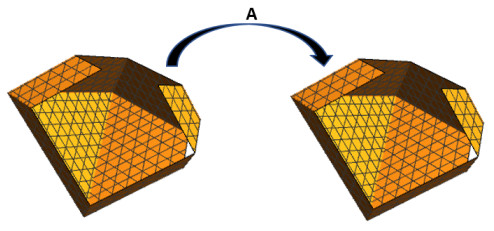









 DownLoad:
DownLoad:















